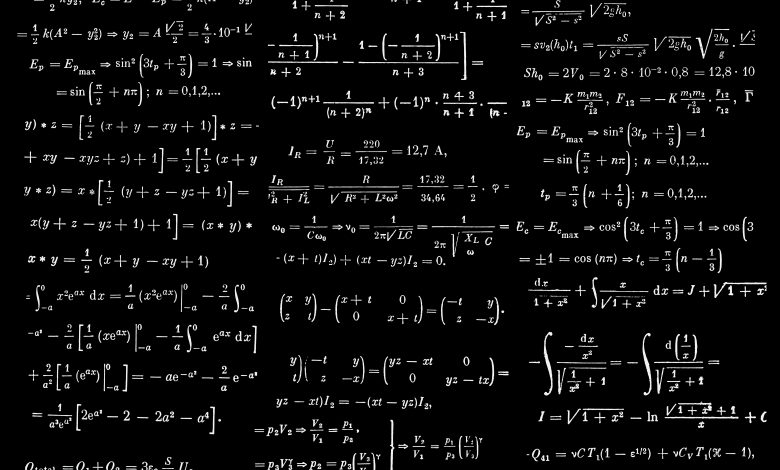What Does the Future Of Teaching Math Look Like?

Math is a fundamental subject that all students must understand. However, there is debate over how educators should teach mathematics in the future. Some people believe that traditional methods of teaching the course are no longer effective and that a new approach is needed.
Others argue that the existing system works well and that changes should only be made if they benefit students. So, what does the future of teaching math look like? This is a question that many educators are asking themselves, and there is no easy answer.
Therefore, individuals wondering how to be a math teacher need to know about the subject’s progression in the future, so they can take appropriate actions to plan their career path. This guide describes how technology is affecting this subject.
The Impact of Technology on Math
Math is a critical subject for students of all ages. It helps children to develop critical thinking and problem-solving skills and provides a foundation for further study in science, technology, engineering, and mathematics (STEM) subjects.
The advent of new technologies, such as augmented reality (AR), virtual reality (VR), and digital math manipulatives, is transforming the way the subject is taught and learned. These technologies can make the course more engaging and interactive and help children visualize concepts in a way that is impossible with traditional teaching methods.
Virtual and augmented reality allows for countless possibilities in education. By incorporating AR and VR into math lessons, students can experience mathematical concepts by visualizing and manipulating data in real time to observe its impact on calculations.
The immersive nature of these technologies could make challenging mathematical ideas easier to understand and retain. It also opens up a realm of interactive educational opportunities – from virtual field trips to simulations of real-life scenarios. Learners can be provided with dynamic, engaging learning experiences by utilizing AR and VR in the classroom.
Additionally, math is often seen as a dry subject, but the introduction of digital mathematical manipulatives is becoming more interactive and engaging for students. These virtual tools allow students to manipulate numbers and equations in a way that mimics the hands-on experience of using physical manipulatives, such as blocks or counters. This helps deepen their understanding and develop critical thinking skills.
Modern technologies also offer unique features, such as changing variables or quickly undoing mistakes. Additionally, they can save time and resources for educators by providing instant feedback and eliminating the need for physical materials.
The use of these new technologies is still in its early stages, but there is great potential for them to positively impact the future of education.
Teaching Methodologies to Take Teaching to the Next Level
One of the best ways to teach math is to use clever techniques. Some students prefer hands-on learning, while others find visual aids more helpful. However, a few essential classroom practices can benefit all students.
Educators looking for instructions on how to become a math teacher can leverage these tips for teaching mathematics in the classroom. These approaches are applicable regardless of technology implementation.
Encourage Active Participation
It’s easy to let a mind wander and lose focus, but active participation in learning is the key to retaining information. The main goal of an educator should be to find ways to engage students and encourage their involvement in the lesson. This can be achieved through various methods, such as group discussions or cooperative activities.
Not only will this increase student engagement, but it also allows for different perspectives to be shared and for ideas to be developed collaboratively. For instance, students can easily pass the IB math exam by retaining concepts learned through active participation. Furthermore, these interactive approaches can make the material more enjoyable and memorable for students.
Use Real-World Examples
Math plays a vital role in everyday life. Mathematical principles are woven into nearly every industry, from budgeting and building to design and technological advancements.
By connecting these real-world applications to the classroom material, students can see how their learning is relevant and important. This helps them understand the concepts better and makes them more motivated and engaged in their studies.
Encourage Practice
It’s a common saying that practice makes perfect, especially in math. Mastery of mathematical concepts requires time and effort, and students need ample opportunities to practice what they have learned. As a result, homework assignments allow students to work through problems independently, while practice sheets enable them to hone specific skills.
Online quizzes provide immediate feedback and give teachers insight into areas where students may need additional help or review. Without regular practice, it’s easy for math concepts to slip away and problem-solving abilities to weaken.
Wrapping Up
Futuristic techniques of teaching math are continually being developed to better suit the needs of students. Some popular methods include using augmented reality, virtual reality, and digital math manipulatives to teach mathematical concepts.
These new techniques can help students grasp complex ideas more quickly and easily. Additionally, adaptive learning technologies are also becoming increasingly common in classrooms. This technology allows students to work at their own pace and receive customized content based on their needs.
Ultimately, these approaches can make the subject more engaging and accessible for all students.




